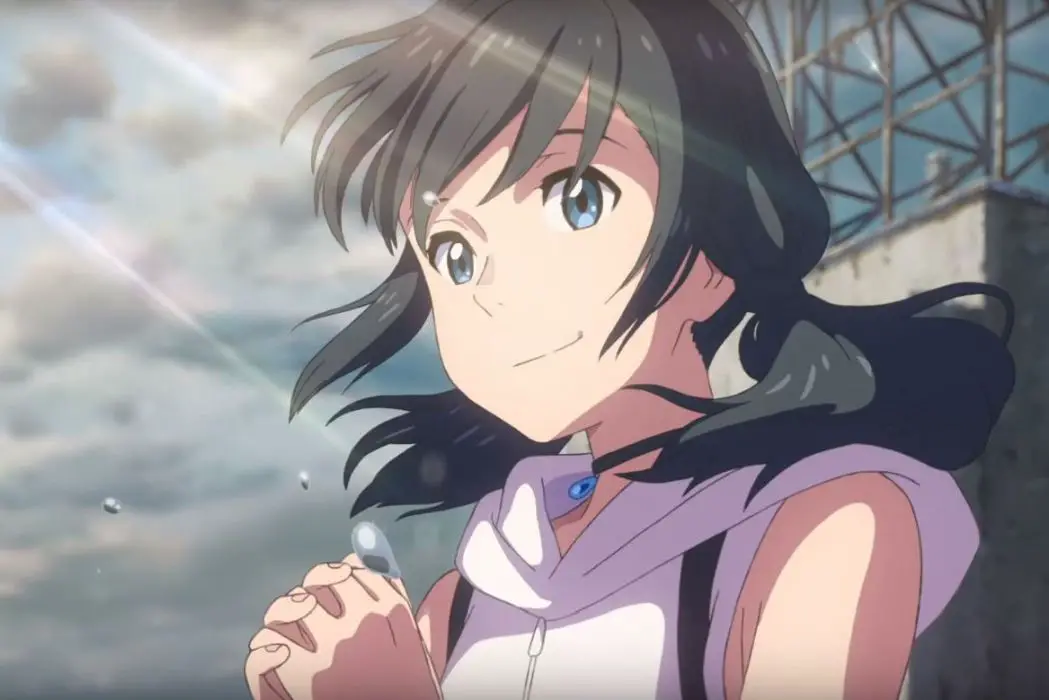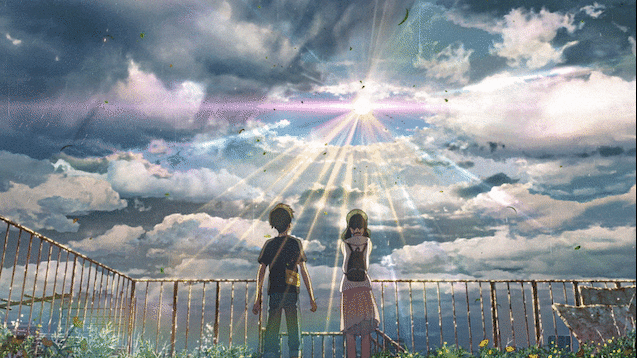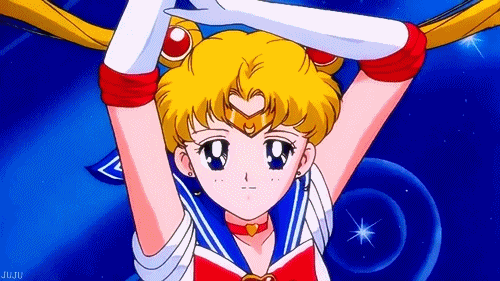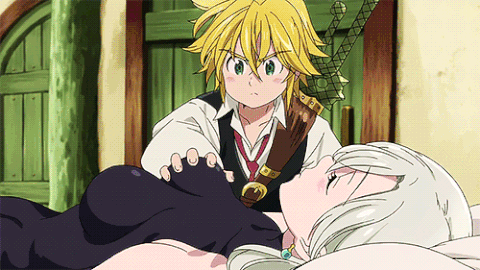On Drawing the 100% Perfect Girl & The Systematic Misrepresentation Of Women In Japanese Anime

Tim Brinkhof is a Dutch journalist based in New York.…
According to Slovenian philosopher Slavoj Žižek, cinema is the most perverted of all art forms. While I personally think that’s a bit harsh, I do not deny that films are a canvas on which we, sometimes consciously, often unconsciously, can project our darkest desires and most ingrained beliefs.
It is for this reason that Žižek’s salivary, nasally voice echoed — quite surreally — through the back of my head whilst watching Makoto Shinkai‘s newest animated feature, Weathering with You. A lot has already been said about this enchanting love story set in a Tokyo plagued by endless precipitation, including its impressive animation (which, while neither exactly original nor particularly inspired, is definitely excellent), as well as its ominous relevancy to our own rapidly changing, increasingly unusual climate.
Surprisingly few, however, have acknowledged the problematic subtext hidden, rather poorly, behind its premise. I say ‘poorly,’ because there really isn’t much subtlety to a boy-meets-girl story in which the girl has the ability to literally part the clouds and stop the rain.

Pixie Dust
Japan Times reporter Matt Schley recently suggested Weathering with You may have drawn inspiration from a short story by Japanese novelist Haruki Murakami, elegantly titled, “On Seeing the 100% Perfect Girl One Beautiful April Morning.” The title is, of course, not elegant at all, and constitutes just one of the many ways in which its author pokes fun at that seemingly romantic but actually quite misogynistic expectation of one day running into the ‘perfect’ (or ‘100% perfect’) girl.
While only a relatively mild case, Shinkai‘s Weathering with You is without a doubt symptomatic of an unfortunate condition that has afflicted female characters of Japanese animation or anime for several decades now where, in order to appeal to — and thus extract money from — their target demographic (which is, coincidentally, the same kind of person described in Murakami’s story), artists have become more and more accustomed to creating women that resemble walking, talking male fantasies more than they do actual people.
To be fair, just as Japan is far from the only one-time (and, in many ways, still) patriarchal society on the planet, so too is it by no means the only one guilty of systematic, institutionalized misrepresentation. In the U.S., film critic Nathan Rabin coined the alluring yet misleading term Manic Pixie Dream Girl (or MPDG) to define the archetypal lover who exists “solely in the fevered imaginations” of her admirers, and whose single purpose is to ‘part the clouds’ that hang over their heads. From the Shirley MacLaine character in Billy Wilder’s 1960 classic, The Apartment, to Margo Spiegelman in the 2015 adaptation of John Green’s much more ‘woke’ novel, Paper Towns, the MPDG is bound by neither time nor space. She does, however, come in many different shapes and sizes.

Her first major appearance in Japan came with the rise of so-called ‘magical girls’ anime. Epitomized by hyper-feminine 90’s icon Sailor Moon and popularized in the West by shows like Winx Club, this genre typically features a group of girls endowed with (surprise, surprise) magical abilities and tasked to defend the world against the forces of evil. If that seems like a fairly empowering setup to you, think again. As Annalee Newitz keenly pointed out in an article written for Film Quarterly, the women in these shows ought to be considered as powerless rather than powerful. Instead of embracing their exceptionality, they long for normalcy. Rather than using their powers freely, they struggle to hide them from their judgmental, ordinary peers. On top of that, let’s not forget the unmistakable perversion behind the notion that women who are strong must also necessarily be magical, supernatural, and/or otherworldly.
The male sidekicks of these stories, in contrast to their heroines, tend to be physically weak yet mentally and morally robust. They are, in other words, the nice guys, always willing to help and never – strange as it is – jealous of, or insecure about the fact that their partners could, if they so desired (and often do, when they get frustrated), crush them in an instant. Contrary to his sister, the ‘Manic Pixie Dream Guy,’ is, for this very reason, anything but submissive. As far as he is concerned, his lack of interior life does not represent a character flaw as much as a favorable alternative to his magical girlfriend’s constant search for identity, and his confident, laid-back nature stands out rather favorably compared the her comically neurotic personality.
Bad Romance
Unlike their American counterparts, teenagers in Japanese shows are generally not looking to get laid; they’re looking for ‘the one’. In fandom communities, such a ‘one’ is known, partly in jest and partly not, as a waifu. Originating from the Japanese pronunciation of the English ‘wife,’ it refers to someone who pretty much personifies the Platonic form of love itself – a love that is sexual, romantic, and something else entirely all at once. Probably the most famous waifu to have graced the silver screen in recent years is Asuna, the female protagonist of the (for reasons which should already be clear to you) ravishingly popular anime, Sword Art Online, which follows a group of people trapped in a virtual reality RPG action game.
Although Asuna may be the face of SAO, she is not its voice. That honor belongs to her lover, boyfriend and eventual teenage-spouse, Kirito. Living out a power fantasy that stirs the envy of every angst-y adolescent viewer, Kirito is your just-below-average Joe – a hardcore gamer whose talents are considered useless in the real world, but make him a force to be reckoned with in the digital one. In contrast, Asuna’s real-life self is, oddly enough, virtually indistinguishable from her in-game persona, something which, as far as I’m concerned, stands testament to the fact that she is basically an empty shell which fans can fill with whatever they choose, as well as proof that the one true quality of the waifu isn’t her good looks or pure heart, but her unconditional devotion to her ‘husband.’

While diaper and condom manufacturers struggle to turn a profit in the loveless Japanese market, the country’s porn industry blooms like no other, and all thanks to the fair sex. From One Piece to Fairy Tail, there is no shortage today of mainstream anime and manga whose character design generally classifies as full-on soft porn, and frequently borders on the hard as well (pun, of course, intended), and just as plentiful as the amorous bonds between sensitive Kiritos and emancipated Asunas are the toxic relationships between powerful male heroes and their heavily objectified damsels in distress.
For a telling example, look no farther than Netflix’s first ever ‘original’ anime, The Seven Deadly Sins, whose protagonist, a super-powered knight by the name of Meliodas, has the physical prowess of a god but the psychology (and, due to a curse inflicted on him by his father, also the body) of a child, imbuing him with an unapologetically insatiable sexual appetite that can only be considered consensual insofar as every female he gets his hands on is either completely fine with or utterly indifferent to his incessant groping and grinding.
The Black Pill
If Todd Phillips’ 2019 smash hit Joker accomplished anything, it is reminding the American public of the highly unlikely though not altogether unthinkable possibility that some men, rather than bear their suffering, might decide – like the Biblical Cain – to unleash their vengeance upon a world that they feel abandoned them. In the West, the spawns of this primordial figure have come to be known as incels, ‘involuntary celibates’ who, judging themselves incapable of establishing or maintaining relationships, succumb to an existential hopelessness that’s often accompanied by a radical and indiscriminate hatred towards members of the opposite sex.
While Japan’s virgins are far more numerous, they are not nearly as violent; on the contrary, rather than seeking out others who share their in own fate, they isolate themselves from any and all human contact. Today, as many as half a million Japanese citizens are believed to be living in self-imposed exile. Unable to withstand the pressure of both their jobs and social obligations, these so-called hikikomori spent their days confined to their rooms, consuming entertainment that, unlike the big and scary world outside, meets their demands of what life should be like – all whilst enjoying the financial support of their despairing parents, of course.
When you confine your entire life to a seven by eight feet box, there isn’t much use in wallowing in your own self-pity. Still, not all stories aim at offering the blind escapism of SAO or Seven Deadly Sins. One of the most commercially successful manga of recent times, Tokyo Ghoul, for instance, presents a world in which very few would actually want to live. Inspired by the melancholy, harrowing writings of Czech author Franz Kafka, this series lets you experience what it’s like to wake up one day and find yourself transformed not into a legendary warrior, but a tiny, weak and disgusting insect.

Ken Kaneki is a shy and studious college student whose uneventful if not entirely unrewarding life seems to take an unexpected turn for the better when a beautiful stranger asks him out on a date. After a wonderful afternoon spent browsing through local bookstores and discussing their favorite authors, Kaneki, unable to contain himself, professes his love for her. To his delight, the girl blushes, takes him by the hand and leads him into a dark alleyway. Expecting his first kiss, the youngster becomes so excited he barely notices his date lick her lips as her pupils turn an unnatural pitch black. Not until he sees blood streaming down his neck does he realize his new girlfriend is actually one of the titular ghouls – a man-eating humanoid that stalks the streets of Tokyo in search of unsuspecting prey.
The imagery at play here couldn’t be any more obvious. Before us we have not only a carbon copy of Bram Stoker’s Dracula, but a striking reiteration of Homer’s siren. Even without all this textual background knowledge, however, it’s not so difficult to see what’s being said between the lines; the seductress, a confident creature who uses her good looks to lure feeble minded and weak willed aficionados to their deaths, has been an irrational fear of man since times immemorial. Of course, no thematic ensemble could be considered complete without a bit of Freudian imagery: and as Kaneki runs for his life, clutching his gaping shoulder wound, the ghoul pins him down on the ground before penetrating his body with her razor-sharp claws.

Premature Ejaculation
While these boy-meets-girl stories may not teach us much about the girls, we certainly learn a lot about the boys. From impossibly high hopes to inexhaustibly strong libidos, there seems to be no shortage of qualms which, while often difficult to pin-point in day to day interaction, are suddenly recognized with startling clarity when presented through the lens of fiction. At the end of it all, I am reminded of an essay by David Foster Wallace titled Big Red Son, an account of the late American writer’s excursion to the ’98 AVN (Adult Video News) Awards that opens with the following surprising yet ever so salient lines:
THE AMERICAN ACADEMY of Emergency Medicine confirms it: Each year, between one and two dozen adult US males are admitted to ERs after having castrated themselves. With kitchen tools, usually, sometimes wire cutters. In answer to the obvious question, surviving patients most often report that their sexual urges had become a source of intolerable conflict and anxiety. The desire for perfect release and the real-world impossibility of perfect, whenever-you-want-it release had together produced a tension they could no longer stand.
This is, of course, an extreme and utterly rare measure. Even so, I do believe it is connected – if only in ways that I, as of this moment, can neither comprehend nor articulate – to what I have been discussing in this article. Deeply afraid of not saying anything substantial on the subject, I want to finish that discussion, then, with a piece of advice going out to the average reader, boy or girl: next time you find yourself complaining about the rain, don’t wait for the sun; bring an umbrella.
Does content like this matter to you?
Become a Member and support film journalism. Unlock access to all of Film Inquiry`s great articles. Join a community of like-minded readers who are passionate about cinema - get access to our private members Network, give back to independent filmmakers, and more.
Tim Brinkhof is a Dutch journalist based in New York. He studied history and literature at New York University and currently works as an editorial assistant for Film Comment magazine. His writing has been published in the New York Observer.













